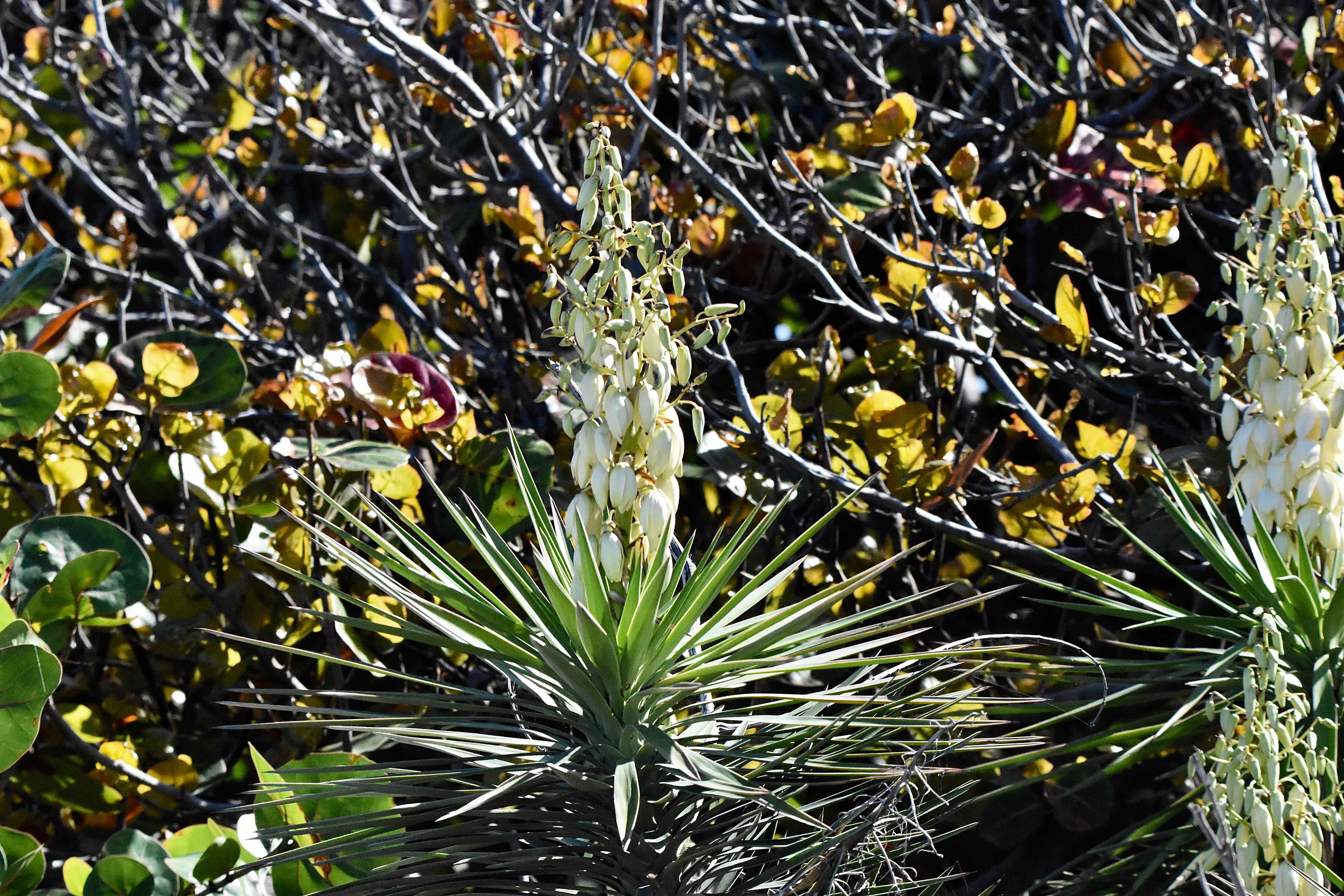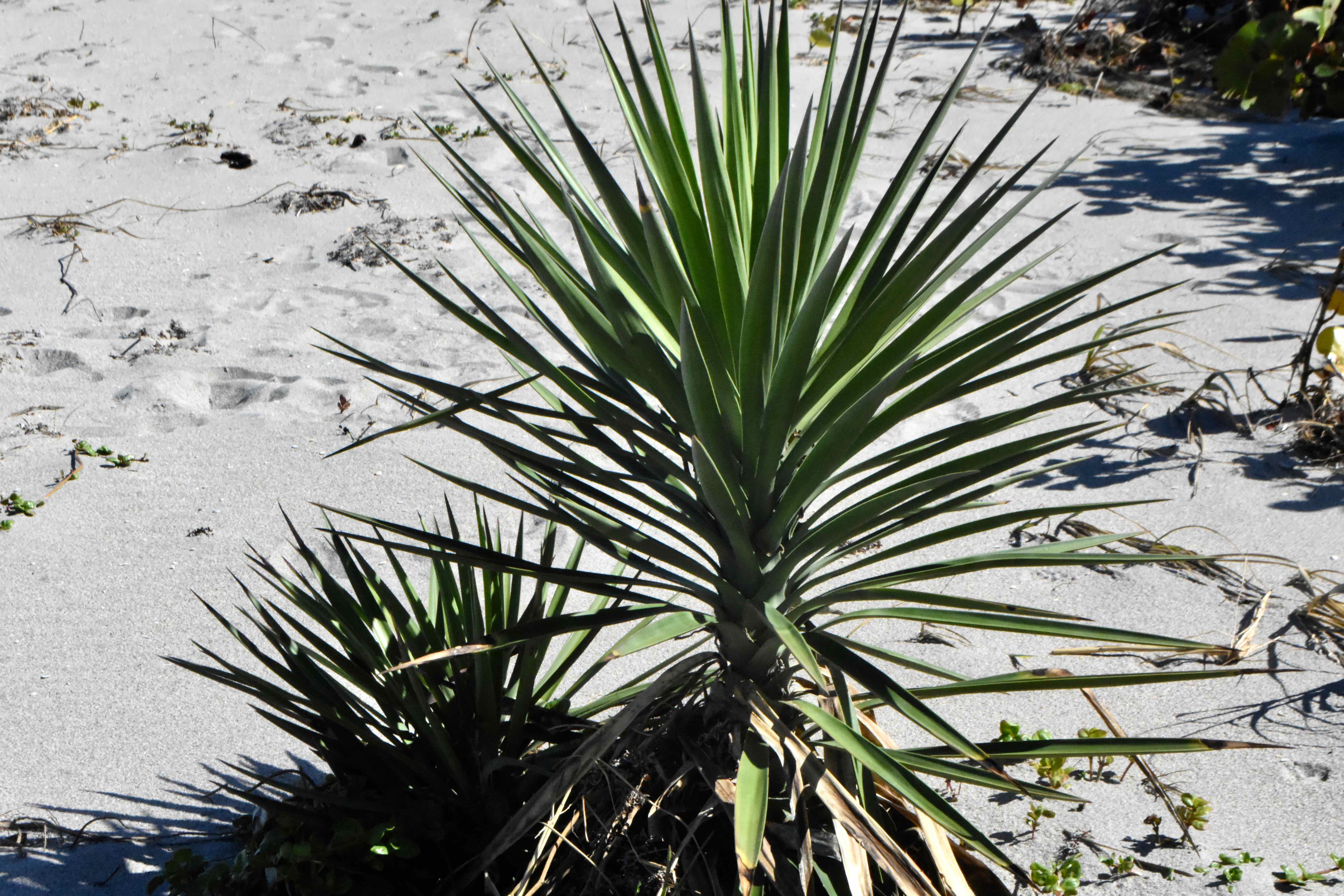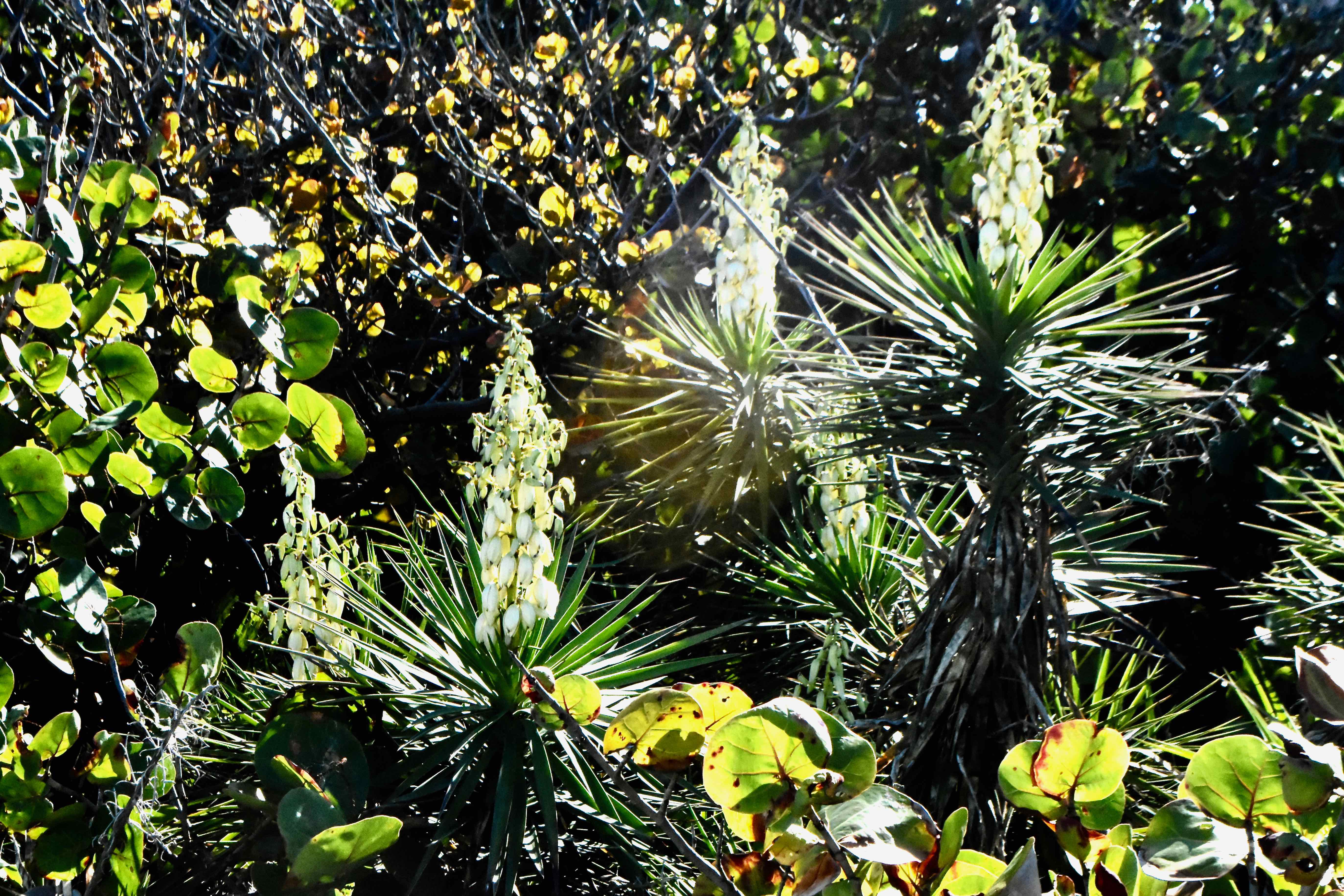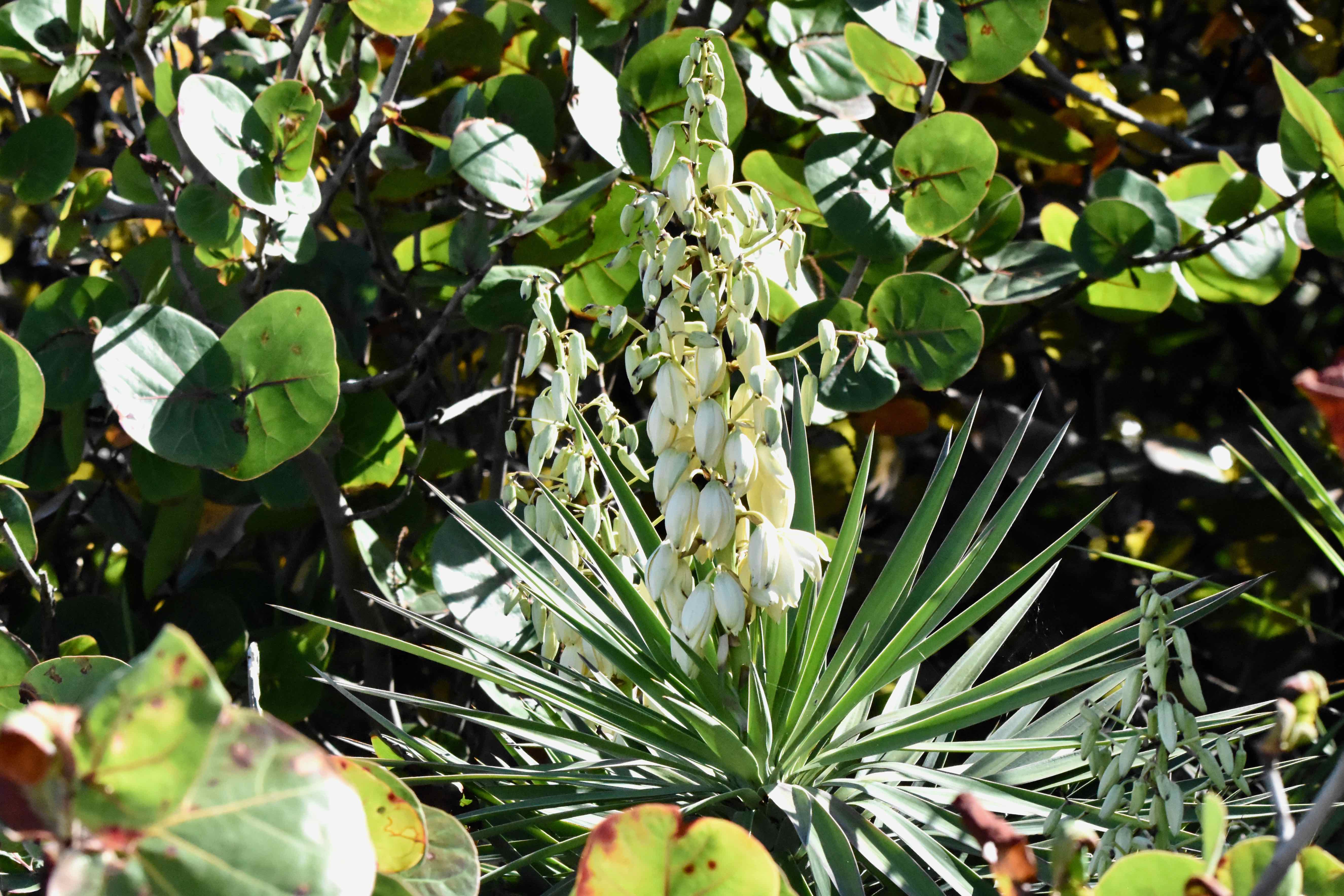
Spanish Bayonet, photographed at Juno Dunes Natural Area, Juno Beach, Palm Beach County, in April 2018.
With its long, narrow leaves that taper to an extraordinarily sharp point, it's not hard to imagine how Spanish bayonet, Yucca aloifolia, gets its name.
Exactly how sharp is that point? Needle sharp. In fact, Native Americans used it as a needle, pulling it off in such a way that some of the leaf fibers remained attached, threadlike, to be used to stitch together whatever needed to be stitched together. Call this guy nature's sewing kit.
Spanish bayonet is a Florida native found mostly in coastal areas as far north as Nassau County and as far west as Escambia. Its natural range extends from North Carolina along the Atlantic coastal plain and as far west as Texas along the Gulf. It's also found in the Caribbean and Mexico. It's been introduced into South Africa, Australia and parts of the Pacific. It is considered an invasive on New Caledonia and on some of Chile's offshore islands.
It is a perennial capable of growing as tall as 24 feet, though usually much less. It can have one to three stems, each with an imposing rosette of those bayonet-leaves. This is a plant that announces, quite plainly, "leave me alone" to any critter that might want to munch on it. The plant sends up a spike called a panicle that's several feet long and covered with numerous white, bell-shaped flowers; it blooms year round, peaking in summer and fall. The striking combination of the flower spike with the foliage makes Spanish bayonet popular as an accent plant and as a rather intimidating border. It grows in coastal areas, sandhills, dry thickets, disturbed sites, coastal strands, hammocks and grasslands. The plants shown on this page were found growing high in the beach dune.
The flowers are large, usually white but can have some purple undertones. They are fragrant, especially at night when they attract a particular species of moth to pollinate it — each species of yucca relies on its own moth for pollination. Spanish bayonet attracts two species of butterflies that use it as a host plant — the yucca giant skipper and the cofaqui giant skipper. The great southern white butterfly uses Spanish bayonet as a nectar plant, as do hummingbirds. Oh, and if you get hungry, you can eat the petals raw or you can batter and deep fry them.
The Choctaw boiled and mashed the root of Spanish bayonet to make a salve used to treat various ailments. The plant was also used to remedy earaches. The flower stem can be peeled and boiled and eaten like asparagus. The fruit of Spanish bayonet is also edible and was also used medicinally. The roots were used to make soap, the leaves to make baskets and the fibers to make string.
It's one of two Yucca species native to South Florida, the other being Adam's needle, Yucca filamentosa, which is found throughout the eastern United States, but is rare in this region.
Other names include Spanish dagger, Joshua tree, soaptree and aloe yucca (note: both Spanish bayonet and spanish dagger are also used as common names for other yucca species).
Spanish bayonet is a member of Agavaceae, the century plant family.
Click on photo for larger image
Links for Spanish Bayonet



